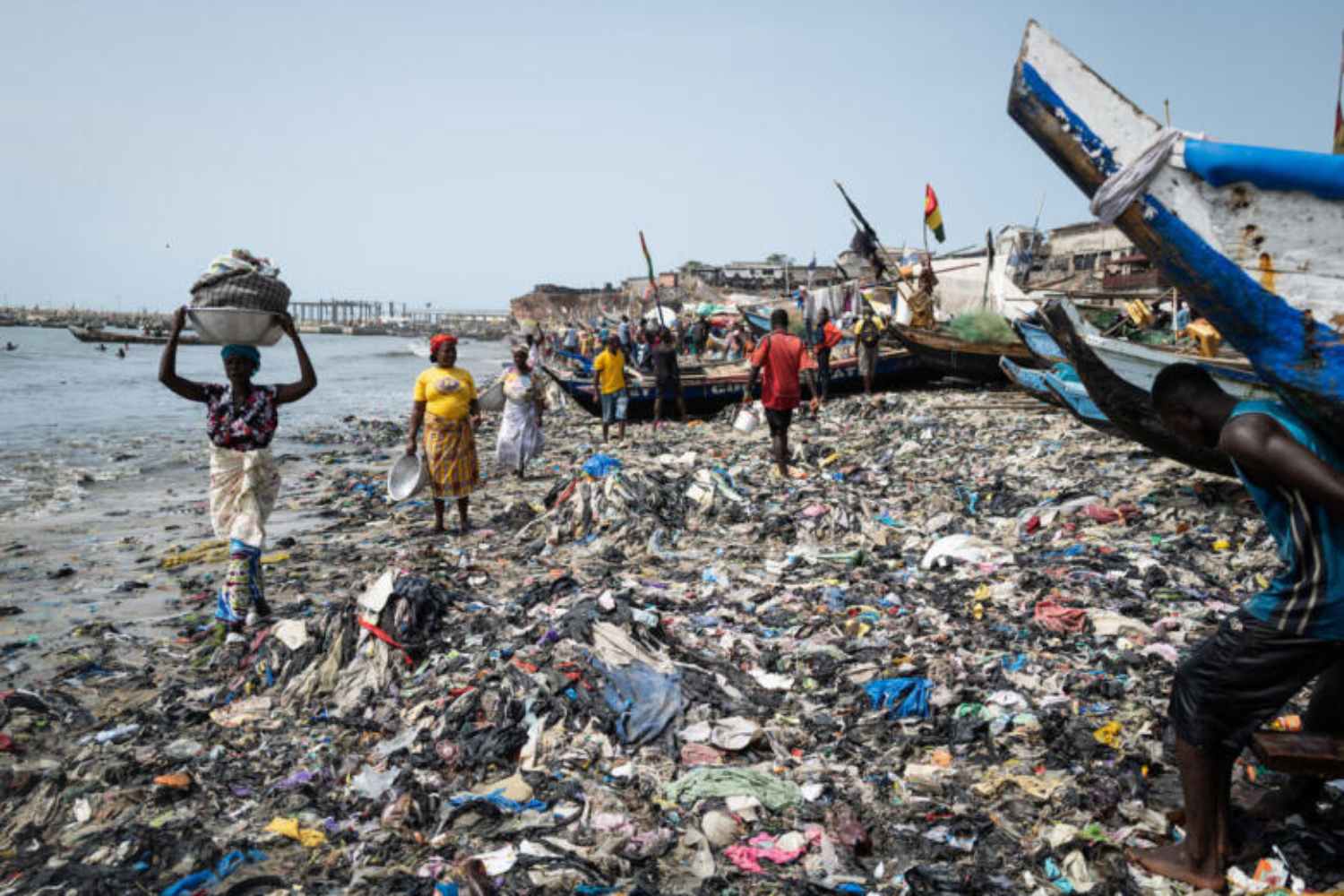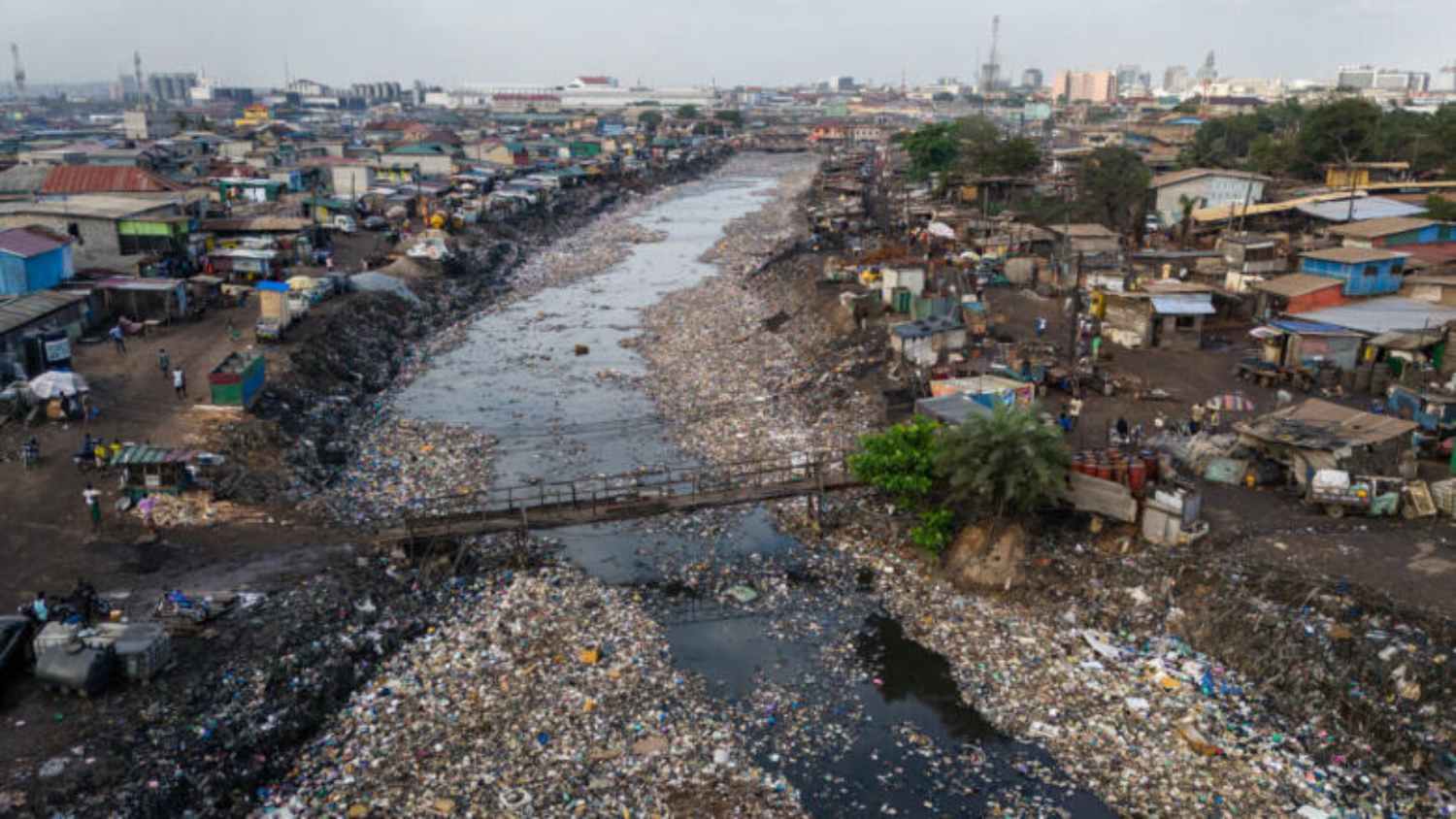Europe exports 900,000 tons of textile waste annually to Africa, where 46% ends up in dumps. Fast fashion's true cost: environmental destruction and health crises in developing nations

@greenpeace
Table of contents
The euphoria of shopping may be infectious, but so is the growing mountain of textile waste destined for Africa. Most sale items are worn fewer than ten times before being discarded or shuffled into the second-hand market—a statistic that reveals something troubling about our relationship with clothing.
Behind the facade of charitable reuse lies a global traffic of unsellable garments that quickly transform into waste. This phenomenon stems primarily from Europe’s poor recycling capacity, combined with the uncontrolled growth of fast fashion, which promotes low-cost, poor-quality garments destined to be thrown away after just a few wears.
The scale of the problem
According to Greenpeace Africa, in 2022 alone, approximately 900,000 tons (1.98 billion pounds) of used clothing were shipped to six African countries, including Kenya, Ghana, Benin, and Tunisia. A recent report from the European Environment Agency reinforces this troubling reality: 46% of European textile waste ends up in open-air dumps across Africa.
The European Parliament estimates that each EU citizen consumes an average of 26 kg (57 pounds) of textiles annually, with 11 kg (24 pounds) ending up as waste. A significant portion of these garments makes its way to the Global South under the label of second-hand goods, but rapidly transforms into toxic garbage that invades coastlines, markets, and local communities. African beaches—once natural paradises—are becoming veritable clothing dumps.
It’s a stark irony: the very garments we buy to express ourselves end up silencing entire ecosystems thousands of miles away.
Health consequences
These garments, often of poor quality and composed of synthetic fibers, end up in open-air landfills or are burned, with serious consequences for environment and public health. In Accra, Ghana’s capital, approximately 15 million used garments arrive weekly, with 90% containing microplastics.
These synthetic fibers not only pollute rivers and soil but also accumulate in human bodies and contribute to the worsening climate crisis. Local fishermen increasingly find more clothes in their nets than fish—a grim testament to the scale of pollution.
The health consequences are equally dramatic. In many areas, clothes are burned to heat water or cook food, generating toxic fumes that increase cases of asthma, bronchitis, and other respiratory conditions. Garments treated with dangerous chemicals—such as arsenic, lead, and benzene—release persistent and bioaccumulative compounds into soil and water, without any real treatment infrastructure in place.
International laws aren’t working
From a regulatory standpoint, international laws exist but are weak or poorly enforced. The Basel Convention, which regulates the export of hazardous waste, doesn’t clearly cover textile waste. The European Union has adopted a sustainable fashion strategy, but without binding mechanisms for producers. Even France’s recent law against fast fashion has proven ineffective, primarily targeting advertising on Asian platforms without addressing the entire system.
Consequently, over 30% of clothing exported from Europe consists of “textile waste disguised as second-hand goods.” For every ton of used clothing exported to Kenya, approximately 480 kg (1,058 pounds) immediately becomes waste. This flow not only clogs African cities but makes evident the need for change: banning untraced exports, imposing legal responsibility on European producers, and creating a true circular economy for fashion, where clothes aren’t literally dumped on someone else.
The solution isn’t just about better recycling—it’s about fundamentally rethinking our relationship with clothing and acknowledging that our consumption choices have consequences far beyond our closets.

@Greenpeace
